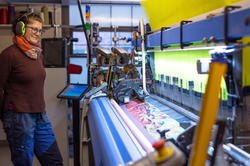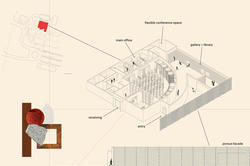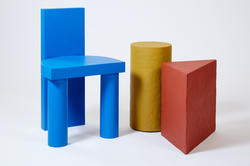Capable of creating textiles with unique structures and graphic capabilities, the new loom builds on RISD’s longstanding investment in the medium.
Students Plan RISD Exhibit for Salone del Mobile Design Fair in Milan
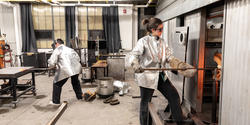
“Five seconds! Are you ready?”
“Wait. Ten seconds. OK, I’m ready, I’m ready!”
Koda Tousignant 24 GL/PR and their project assistant William Jin 24 GL—both seniors—call out to each other in the Glass department’s hot shop, where they are working together to complete Dirty Laundry: soir d’été, synchronizing their movements like chefs in a professional kitchen.
The piece—a series of twisted glass sheets sandblasted with text reflecting on Franco-Anglo relations in Canada—will be shipped to Milan on March 1 as part of Objects May Shift, RISD’s first-ever multidisciplinary display at Salone del Mobile (April 16–21), the largest annual furniture design fair in the world. The planning got started this Wintersession in a new course led by Textiles Professor Anais Missakian 84 TX and Associate Professor of Furniture Design Pete Oyler MFA 09 FD that includes students from seven departments: Ceramics, Furniture Design, Glass, Graphic Design, Industrial Design, Interior Architecture and Textiles.
In addition to creating the objects to be shown, the students are planning and executing every aspect of the exhibit, from developing its conceptual framework to designing graphics and displays for the booth to documenting the work and building a related website. The project is generously funded by the Provost’s Office and the divisions of Fine Arts and Architecture & Design, allowing each of the 20 students in the class to travel to Milan for the install come April.
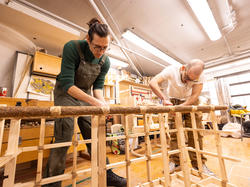
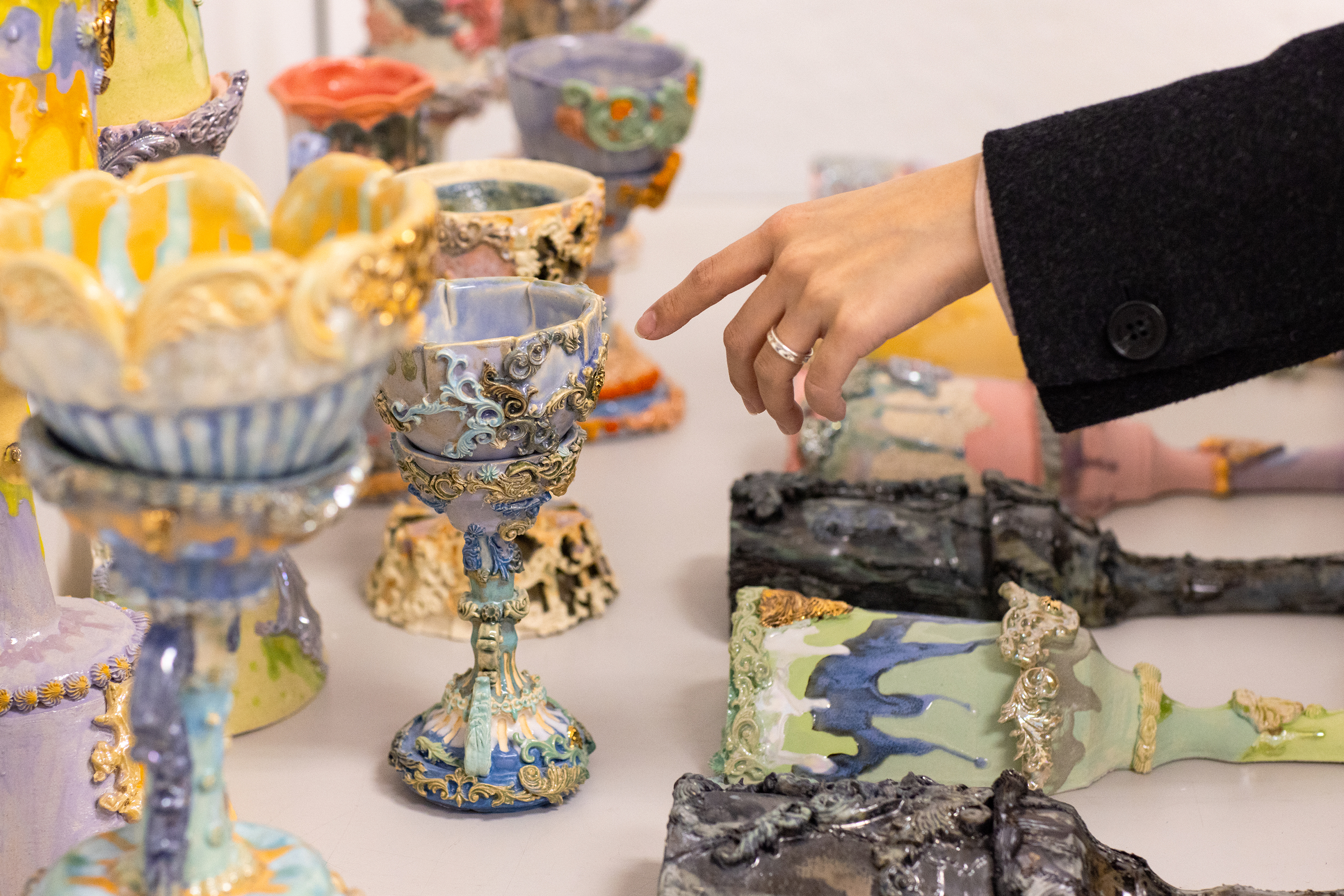
“Our goal is to bring RISD expertise to the table and create a performative display that represents the institution as a whole while focusing on the collective versus the individual,” says Missakian. “We gathered as a group at the start and end of each class to give students the opportunity to talk through their ideas, which ensured that everyone’s voice was present throughout the design process.”
“Art and design exhibitions have a long history of proposing new ways of living and of understanding our material, built world,” Oyler adds. “As our world changes, artists and designers are working collaboratively to imagine new possibilities from our unique disciplinary vantage points. This student-designed exhibition is a celebration of that disciplinary rigor and collaborative vision.”
In late January, each of the three exhibition teams—Identity, Graphics and Display—presents their concepts to the larger group and to visiting critics Jill Singer, cofounder of the online arts publication Sight Unseen, and PR expert Tim Monaghan. With only a few weeks left before the deadline for shipping everything to Milan, the class is hashing out the details for presenting the work most effectively in their 4x9-meter booth. Should they stick with the beige carpeting and other standard booth materials or splurge on upgrades like linoleum? Who’s designing the long-sleeve shirts everyone has agreed to wear at the show? What heights should the plinths be to allow the work to be displayed dynamically?
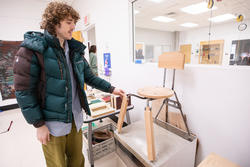
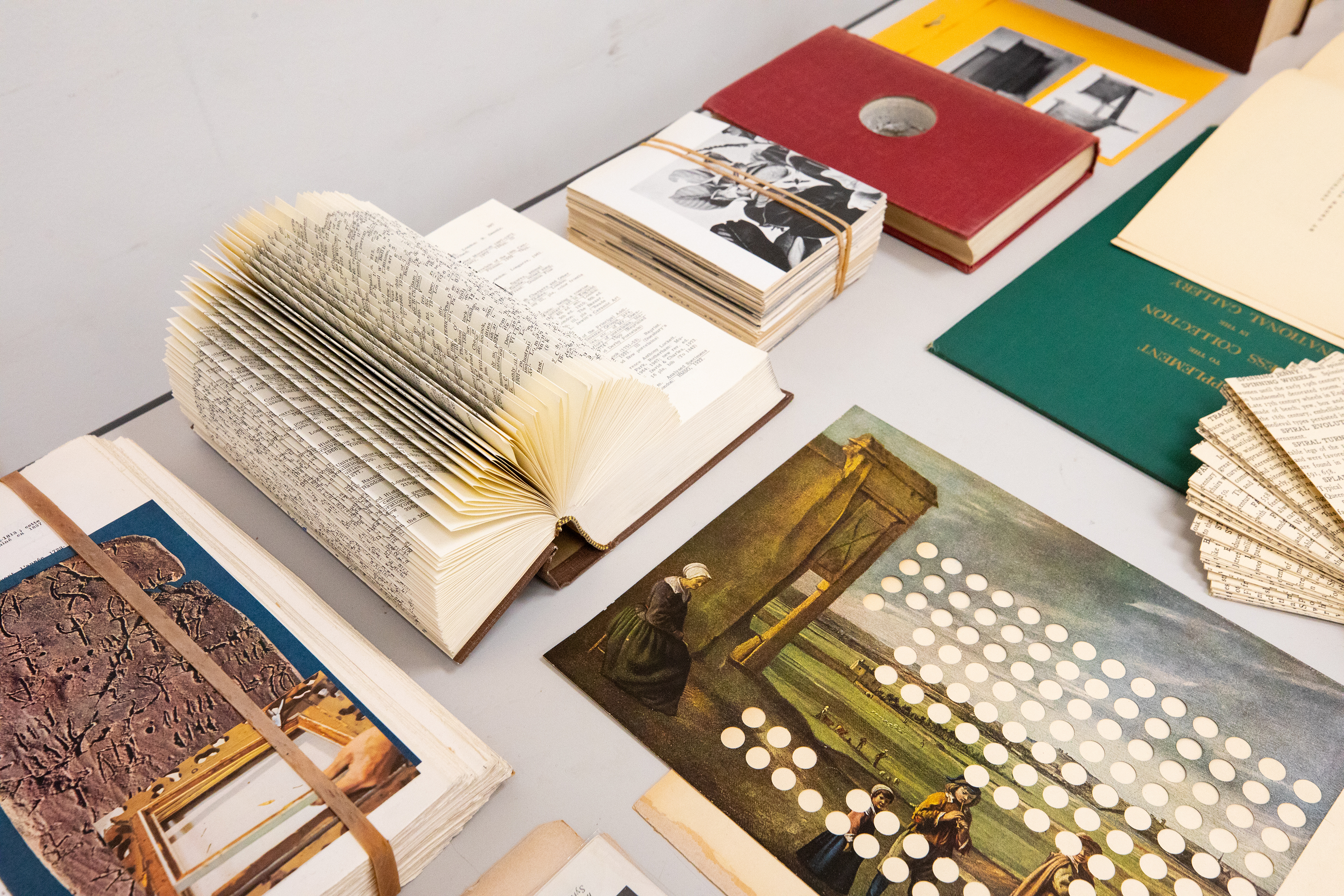
Oyler and Missakian do their best to keep the conversation focused on guiding principles like booth circulation and the use of negative space. “Remember that this is a very large trade show with thousands of people walking around, not a white box gallery exhibition,” Missakian reminds the group.
The classroom next door is filled with completed and in-progress work. “This is the first installation I’ve made at RISD,” says grad student Christine Jung MFA 24 CR as she surveys the piece she created, Fool Me Three Times. It is reminiscent of a reflecting pool but made entirely out of handmade ceramic tiles. “I think it works with our overall theme because viewers will see the tiles as a cohesive indication of water and experience that shift in perspective,” Jung says.
Senior Sophie Meyer 24 TX is finishing up a Jacquard tapestry she describes as “both an homage to historical textile practices and a distortion of the traditional expectation of the interior.” Collaged images of rich tapestries intermingle with images of hoarding, trash and AI-generated imagery to overwhelm the viewer and call into question an object’s value within the space it inhabits. The team will create a kind of fabric wallpaper out of the tapestry, which will occupy about 80 square feet in the booth.
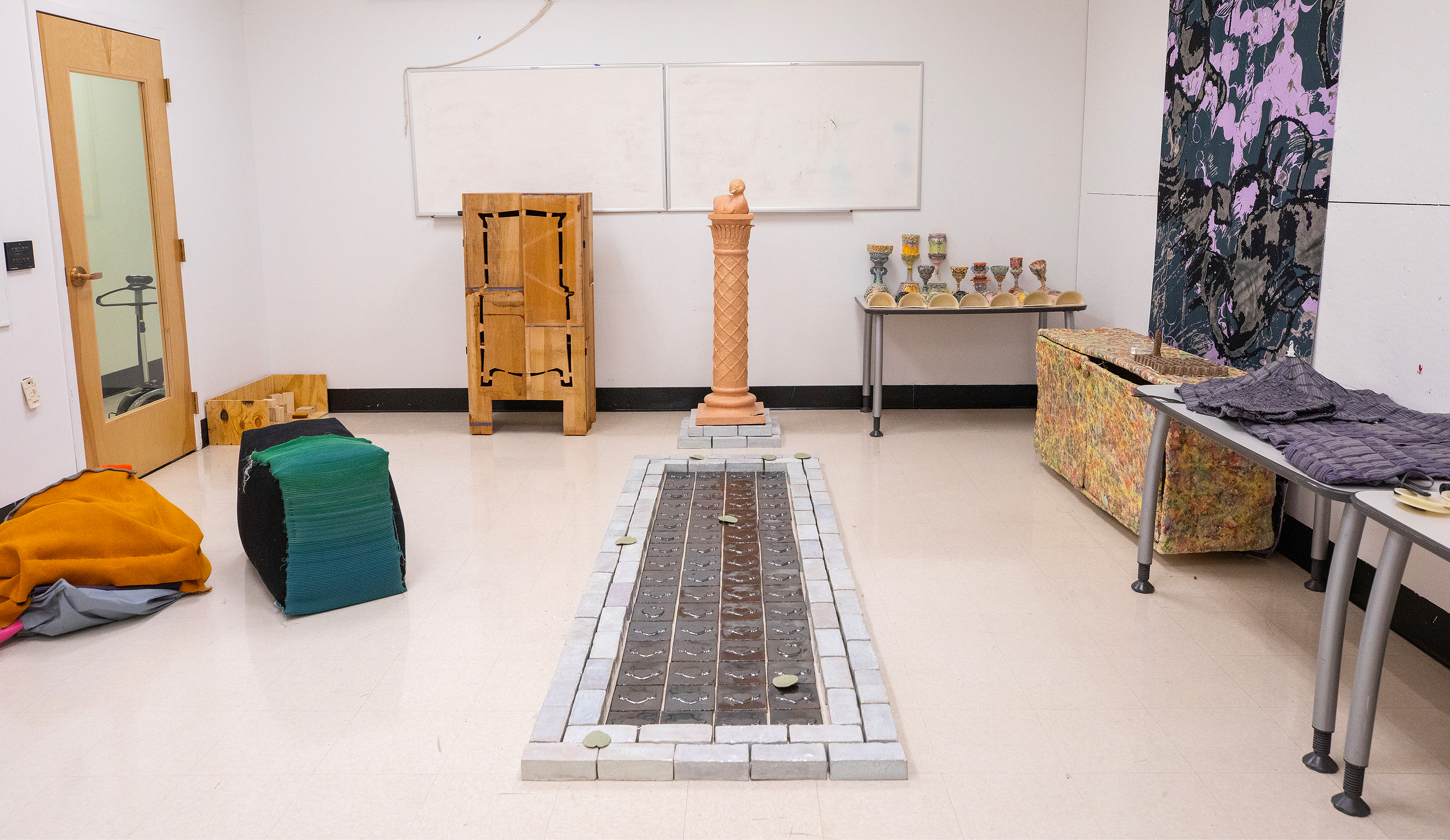
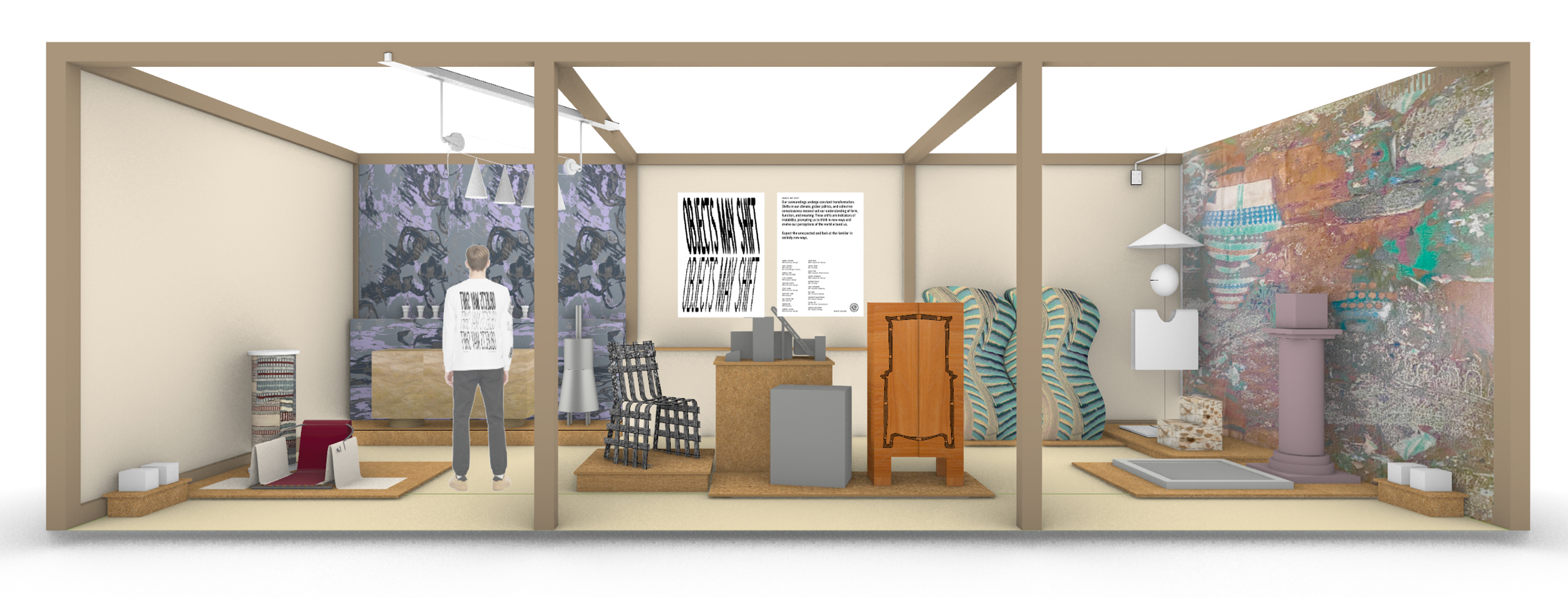
Furniture Design major Cam Lasson 24 FD has created a sycamore and steel chair with mix-and-match parts that he’ll switch out at the fair as part of a performance piece. “The sycamore was donated by [furniture manufacturer] Herman Miller,” he says. “My goal is to disassemble and reassemble it in 340 seconds, which is how long it takes Herman Miller to build their Aeron chair.”
Fellow Furniture Design student Samuel Aguirre MFA 24 FD is partnering with printmaker Tony Torres MFA 25 PR on two pieces—a chair and a credenza—wrapped in mulberry fibers. They’re working together in the woodshop to boil strips of mulberry bark procured from a farm in Ohio, pounding them flat and then twisting them around the ash frame Aguirre built. “It’s similar to an ancient Aztec technique for making paper,” Torres explains.
The work speaks to shifting ideas about furniture production and expected lifespan, Aguirre adds. It’s another impressive example of iterative, conceptual design that plays into the exhibit’s overarching framework: Objects May Shift.
Learn more by visiting the Objects May Shift website.
Simone Solondz / photos by Jo Sittenfeld MFA 08 PH
February 15, 2024
